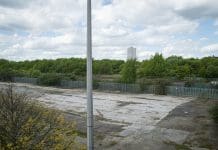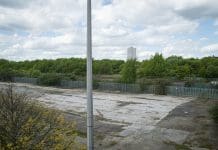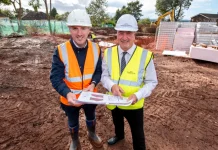With large amounts of brownfield sites in Britain being subject to contaminated land, re-purposing the land has a number of challenges. Chris Loaring, Head of Consultancy at Argyll Environmental discusses study and remediation of such sites.
As the first industrialised nation and with an accordingly lengthy industrial history, Great Britain has a significant number of ‘brownfield’ sites or ex-industrial land, much of which (around 400,000 hectares at the latest estimate) suffers land contaminated by toxic or other dangerous agents.
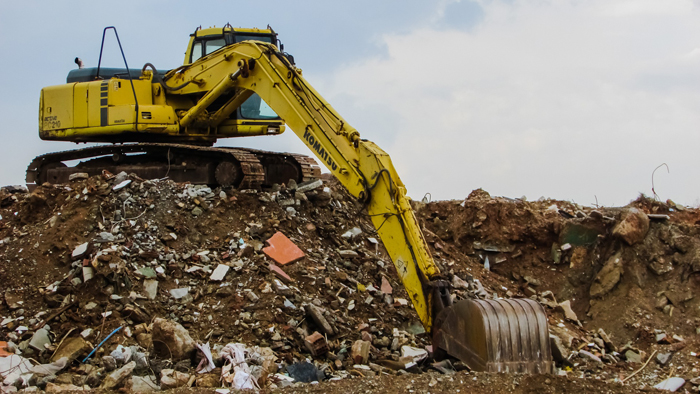 Many of these sites have the potential to be re-purposed and represent great investment potential but there are factors that you should bear in mind.
Many of these sites have the potential to be re-purposed and represent great investment potential but there are factors that you should bear in mind.
Broadly speaking, property investors who have bought, or are considering buying, contaminated land will normally be required by legal statute to design a contaminated land management programme. This is the case whether they propose to develop the land for certain purposes (e.g. housing) or where the contamination represents (actually or potentially) an environmental or other threat to health. In these cases there is a requirement for contaminated land investigation, management and reporting.
What are Phase I and II Studies & Remediation?
-
Phase 1 Desk Top Study
A risk assessment is carried out to ascertain the broad potential risk of contamination using a tried and tested model. This risk is established via a desktop study and walkover survey. The desktop study entails the collection and review of historical data covering previous uses of the site, historical and present neighbouring land use and other searches of environmental records. Walkover surveys can also be employed to visually survey and detect possible sites of contamination.
Using the findings concerning previous site activity, further technical research is conducted examining the precise types and quantities of chemicals potentially present at the site, their behaviour and effects on the local environment. On the basis of the study, a risk management decision can be made on whether or not further information should be collected, and if so, how.
After each assessment, the surveyor can conclude either that remediation action needs to be taken or that too little is known about the site to draw conclusions. In the case of the latter, more detailed risk assessments must be carried out. Risk assessments can progress as required from preliminary to generic and to detailed, with the level of complexity increasing with each one.
-
Phase 2 – Geo-Environmental & Geo-Technical Studies
An intrusive site investigation can be carried out to gain a better understanding of the site conditions and characteristics concerning soil and groundwater contamination. Intrusive site investigations should include the installation of boreholes or excavation of trial pits to obtain water and soil samples.
The extent of the intrusive investigation depends on the quality and quantity of information required, and should be carried out in compliance with the relevant British Standards Codes of Practices. The samples are then sent to an accredited laboratory for analysis and testing to detect contaminants identified in the desktop study, the results of which are written up in an interpretative report.
-
Phase 3 – Assessment and Remediation
Once the degree of contamination, if present, has been ascertained, the project enters the ‘options appraisal’ phase. This is where the kind of remediation work required to clean up the contamination is decided upon. Each of the options available to you needs to be assessed in depth.
Factors for assessment include the time required for a given approach to reduce contamination; the suitability of a given approach for the site, taking into account site size and ease of access; the costs involved; and any legal approval or permissions required. Your remediation specialist should draw up a detailed report summarising your remediation strategy.
Next, a conceptual implementation report is produced, based on the remediation strategy, explaining how the strategy will be put into action. This report should be produced in consultation with all parties who have an interest in the land, including neighbours and local authorities. Safety and effectiveness are both paramount when it comes to the actual implementation of your remediation strategy. Permits and regulatory approvals must be sought and, if necessary, trials will be carried out to test the effectiveness of the chosen remediation technique.
The progress of remedial works needs to be monitored and documented, the details of which should be outlined in a verification plan. Progress should be recorded in a verification report produced at the end of the remediation strategy implementation, certifying the final condition of the site.
A further plan should be produced outlining what, if any, longer-term maintenance or monitoring is required. This longer-term plan should be kept under review, but any changes regarding monitoring or maintenance will have to be approved by the relevant regulatory bodies. Thorough and accurate record-keeping is important at every stage of the process, recording what action was taken, when, and how the decision was arrived at.
When Is An Investigation Necessary?
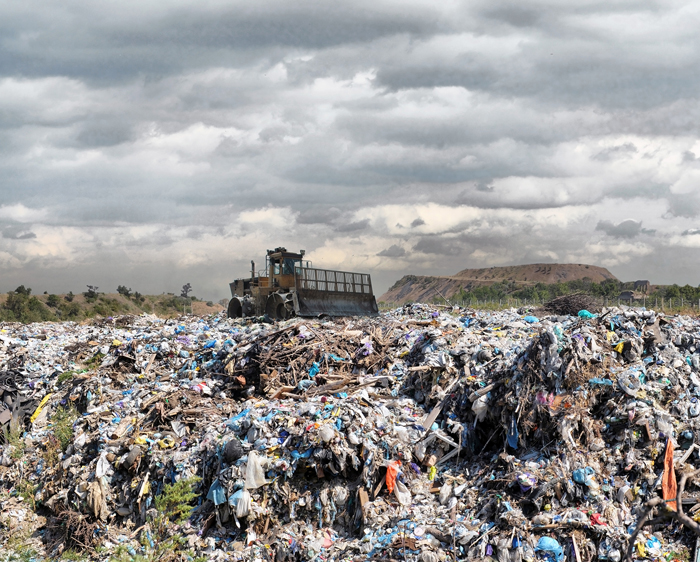 The government seeks to increase drastically the number of houses being built over the coming years to relieve the housing crisis. Brownfield sites represent the perfect opportunity for many land developers. Brownfield land is that previously used for industrial purposes. These sites are usually located within urban areas, reducing the rate of suburban sprawl and thus car usage, helping instead to make the most efficient use of existing transport and waste management services.
The government seeks to increase drastically the number of houses being built over the coming years to relieve the housing crisis. Brownfield sites represent the perfect opportunity for many land developers. Brownfield land is that previously used for industrial purposes. These sites are usually located within urban areas, reducing the rate of suburban sprawl and thus car usage, helping instead to make the most efficient use of existing transport and waste management services.
The legacy of prior industrial use of brownfield sites often persists in the presence of pollution or contamination on, under or around the site. Whilst this can present a challenge, the increasing demand for brownfield land reclamation provides the opportunity to encourage more eco-friendly and sustainable living, due to the fact that the land must be cleaned up before use.
Beyond brownfield sites, local authorities often make planning permission conditional on developers investigating potential land contamination. Where it’s found, developers must carry out remedial work to clean the land to a standard where no risk is posed to users of the site. The developer gets planning permission for relatively cheap land, while the local authority sees potentially dangerous contaminants removed from the neighbourhood. Therefore, it is crucial that developers carry out an investigation into the extent of contamination to avoid purchasing land where the costs of remedial work might be unfeasible.
Does your choice of Environmental Consultant Matter?
The interaction between science, property law, planning regulations and environmental requirements is extremely complex. It’s vital that a consultant who is engaged to draw up a contaminated land report should have taken advice from legal experts in this field.
The report’s design should reflect this advice so that it is addressing all of the relevant issues and giving the client a clear and correct summary of the position. Existing or potential owners of contaminated land will need to talk to consultants who can provide customised guidance on contaminated land management within the regulations. Where local authorities do know about historic contamination, they need to carry out a detailed inspection to get certainty on the type and scale of the problem.
How do you Source High Quality Environmental Reports?
A high-quality report will be robust in its analysis but easy to read. It’s useful if the report is properly structured. An overview section at the front should sum up the consultant’s view in a concise format and then guide readers into the detail, showing how the studies involved were carried out. Many people don’t have the time to plough through all the detail and need the headlines so that they can make a decision.
Clients should avoid reports that feature a lot of undigested data as this can sometimes be a sign that no one has actually written the report – a lot of tables and statistics have been pasted in from online sources, and the resultant generic commentary has been presented as a customised report. This may in turn mean that no one has the overall picture.
A good test is to ask to speak to the person who wrote the report. This will be readily agreed to by the best environmental consultancies but will cause consternation and excuses if the report is actually a “cut and paste” job. Given the level of liability that contaminated land can bring, clients need to be sure that their consultant is fully aware of the legal, environmental, financial, business and reputational risks that may be involved.
Ultimately, a well-researched, robust and comprehensible Contaminated Land Report will help all involved to make a sound and sustainable decision on the way forward.

Argyll Environmental staff portraits – Chris Loaring








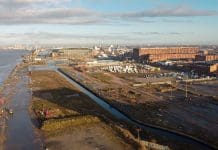
![[VIDEO] Planned £125m Govan Graving Docks revamp revealed View of the docks before the Govan Graving Docks revamp](https://www.pbctoday.co.uk/news/wp-content/uploads/2024/11/Postbanner-218x150.jpg)

